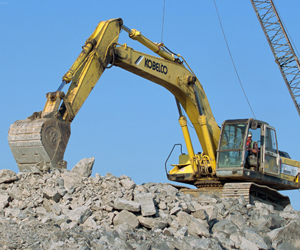 Feb. 8, 2012 – A Wisconsin town that adopted an ordinance to regulate nonmetallic mining did not need county approval, the Wisconsin Supreme Court recently ruled.
Feb. 8, 2012 – A Wisconsin town that adopted an ordinance to regulate nonmetallic mining did not need county approval, the Wisconsin Supreme Court recently ruled.
County approval is required for local zoning ordinances if the county in which the municipality is located has adopted a countywide zoning plan pursuant to Wis. Stat. section 59.69. Such county approval is not required to adopt local non-zoning ordinances.
Several residents of the Town of Cooks Valley, located within Chippewa County, sued the town to invalidate the town’s nonmetallic mining ordinance, claiming the ordinance is a zoning regulation that was subject to the approval of the Chippewa County board.
The Chippewa County Circuit Court agreed with the plaintiff residents, and the town appealed. A state appeals court certified the case to the supreme court.
In Zwiefelhofer v. Town of Cooks Valley, 2012 WI 7 (Feb. 8, 2012), the supreme court unanimously (6-0, Justice David Prosser did not participate) reversed the circuit court, concluding the town exercised a valid non-zoning police power not subject to county review.
“[D]espite having some similarities to traditional zoning ordinances, the [nonmetallic mining ordinance] is not to be classified as a zoning ordinance,” Chief Justice Abrahamson wrote.
The nonmetallic mining ordinance
The town board adopted the nonmetallic mining ordinance (mining ordinance) in 2008 after holding public meetings. The mining ordinance requires a permit for commercial sand and gravel open-pit mines and associated activities like drilling, blasting, or excavating.
The primary purpose of the mining ordinance is to “promote the health, safety, prosperity, aesthetics, and general welfare of the people and communities” within the town.
Under the mining ordinance, the town may grant permits to residents for nonmetallic mining, but may impose restrictions to protect things like groundwater quality and air emissions.
Noting that the town could have adopted a zoning ordinance to regulate mining activities under its zoning power, the supreme court explained that “simply because an ordinance could qualify as a zoning ordinance does not mean it must be adopted as a zoning ordinance.”
Indeed, the town argued that its mining ordinance was not adopted as a zoning ordinance requiring county approval. The supreme court agreed, examining six traditional zoning ordinance characteristics to conclude the mining ordinance was a general ordinance.
For instance, the court explained that, unlike traditional zoning ordinances, the mining ordinance did not create districts or zones, permits nothing as of right, and regulates based on the nature, rather than the location, of the nonmetallic mining activity.
“The [mining ordinance] does not directly create areas where nonmetallic mining is allowed and others where it is not allowed,” the chief justice wrote. “It regulates nonmetallic mining wherever it might be located.”
Court rejects “pervasive” land use regulation argument
The supreme court rejected the argument that an ordinance is a zoning ordinance when it “pervasively” regulates the use of land, or substantially interferes with land use. This mining ordinance, the plaintiffs argued, pervasively regulates the use of their land.
“Unfortunately, the phrases ‘pervasive regulation’ of the use of land or ‘substantial interference’ with the use of land are not effective bright-line rules to guide local governments or courts,” Chief Justice Abrahamson explained. “These phrases turn out to be woefully dim when applied to varying facts and may be over-inclusive in application.”
The court noted that the mining ordinance only regulates one activity, nonmetallic mining, and does not address what “comprehensive” classes of activities can be pursued in certain areas.
The court also rejected the argument that the mining ordinance is effectively a zoning ordinance because it allows “conditional use permits” for nonmetallic mining and allows “preexisting” activities to continue, terms generally associated with zoning ordinances.
Through this analysis, the court suggested that other nonmetallic mining ordinances could be considered zoning regulation subject to county review.
“In sum, many traditional characteristics of zoning ordinances are absent from the [mining ordinance],” the chief justice wrote, also noting some similarities.
“An examination of the similarities and differences points to the conclusion that this [mining ordinance] is not a zoning ordinance.”
Attorneys
Joe Thrasher of Thrasher, Pelish, & Franti Ltd., Rice Lake, represented the Town of Cooks Valley. William Thiel of Weld, Riley, Prenn, & Ricci S.C., Eau Claire, represented Loran Zwiefelhofer et. al.
Amicus curiae briefs were filed by the Wisconsin Towns Association, the Wisconsin Realtors Association, the Wisconsin Builders Association, the Aggregate Producers of Wisconsin, Inc., the Wisconsin Transportation Builders Association, Inc., the Preferred Sands of Minnesota, and the League of Wisconsin Municipalities.
